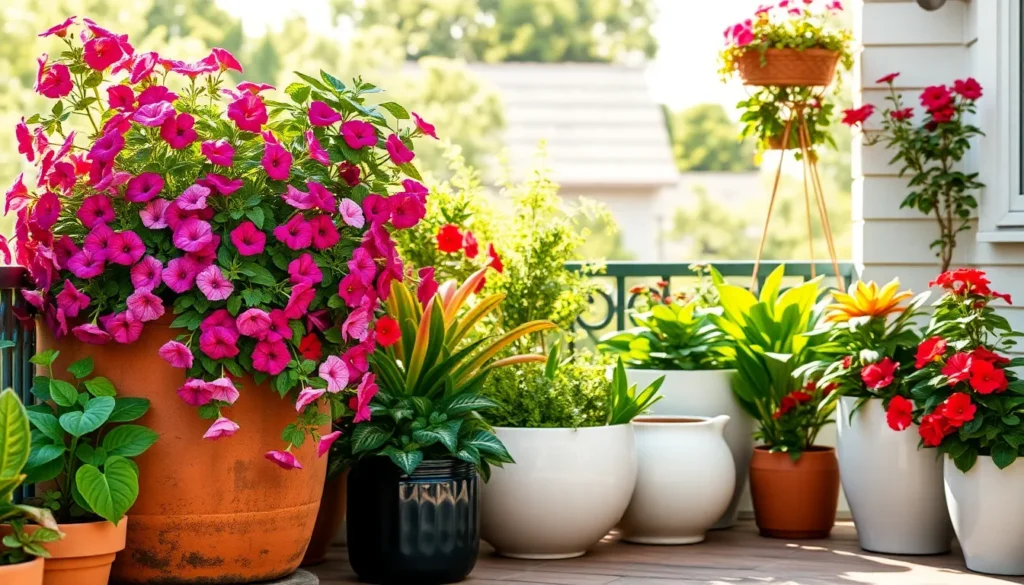Whether you’re just starting your green thumb journey or you’ve been nurturing plants for years, the world of container gardening offers an exciting way to bring life and color to any outdoor space. This guide, “10 Best Plants for Outdoor Containers,” is your ticket to transforming patios, balconies, and small gardens into flourishing oases that delight the senses.
Imagine the thrill of seeing vibrant blooms and lush foliage greeting you each day, all within arm’s reach. Our carefully curated list is designed to not only inspire your creativity but also ensure your gardening efforts are rewarded with stunning results. With these top picks, you’ll discover plants that are not only beautiful but also resilient and easy to care for, making success achievable for gardeners of all experience levels.
Dive into this guide and uncover practical tips and insights that will bolster your gardening confidence and empower you to create captivating outdoor displays. From choosing the right containers to understanding the specific needs of each plant, you’ll gain the knowledge you need to cultivate a thriving container garden. Embrace the joy of gardening and let this guide be your companion in crafting a stunning outdoor haven, where every plant is a testament to your growing skills and passion.
Dwarf Lavender (Fragrant and Compact)

Dwarf lavender is a delightful addition to any outdoor container, offering both beauty and fragrance. With its compact size, it is ideal for small spaces, making it a perfect choice for balconies and patios.
To thrive, dwarf lavender requires well-draining soil, so consider using a mix of sandy soil and perlite. Ensure your container has adequate drainage holes to prevent waterlogging, which can harm the roots.
Place your lavender in a sunny spot, as it performs best with at least six hours of direct sunlight daily. For optimal growth, water sparingly; allow the soil to dry out between waterings to mimic its natural Mediterranean habitat.
For those looking to enhance their lavender’s bushiness, regularly pinch off the tips of the stems. This encourages the plant to produce more branches, resulting in a fuller appearance and more blooms.
Calibrachoa ‘Million Bells’ (Continuous Bloomers)
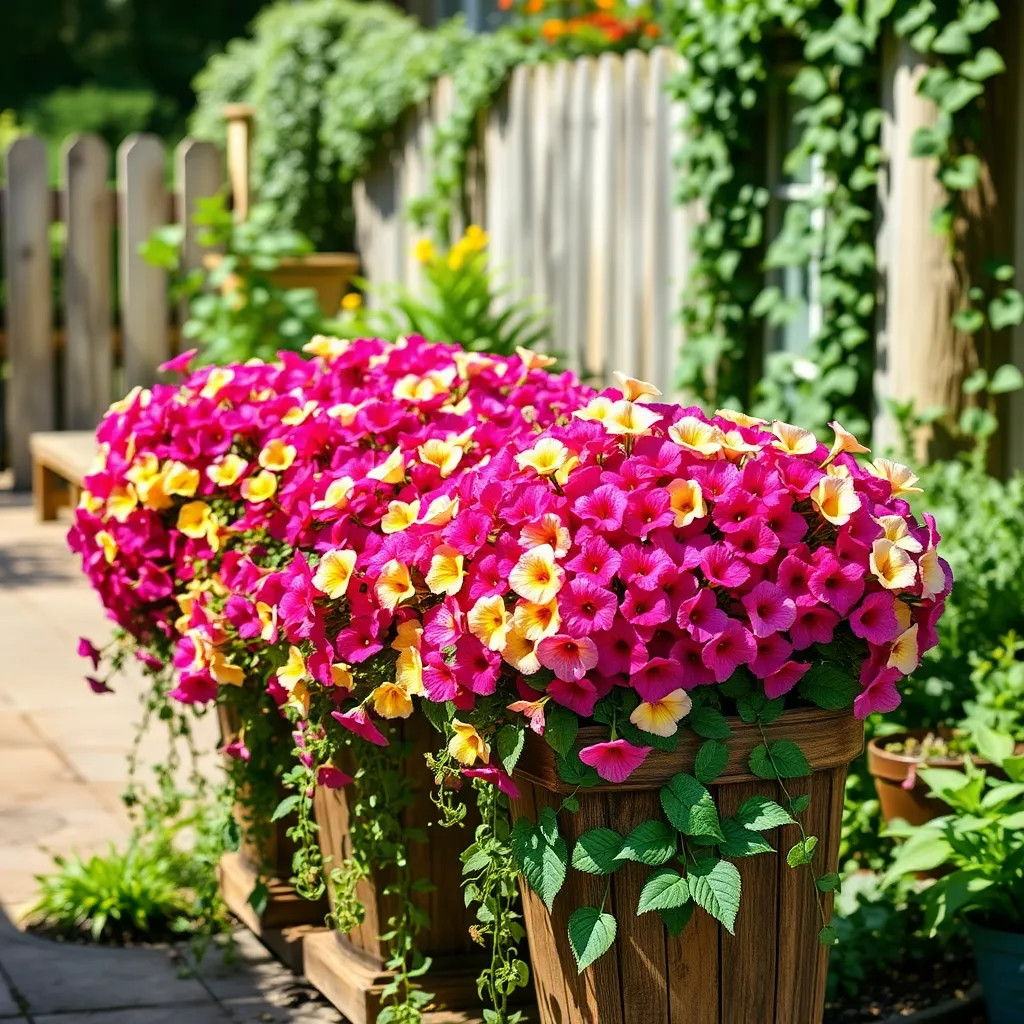
Calibrachoa ‘Million Bells’ is a vibrant choice for outdoor containers, known for its continuous blooming from spring until the first frost. These hardy plants are perfect for beginners because they require minimal care, yet deliver maximum impact with their colorful array of small, trumpet-shaped flowers.
To get the best out of your Calibrachoa, plant them in a well-draining potting mix, as they thrive in slightly acidic to neutral soil. Ensure the container has adequate drainage holes to prevent waterlogging, which can lead to root rot.
Regular watering is crucial, especially in hotter months, but take care not to overwater. Allow the top inch of the soil to dry out between waterings, providing a balance that keeps the plants healthy and blooming.
Feed your Calibrachoa with a balanced, water-soluble fertilizer every couple of weeks to support continuous blooms. For those looking to boost blooming, deadheading isn’t necessary with these self-cleaning flowers, making them an effortless addition to any container garden.
Herbs Trio: Basil, Thyme, and Rosemary (Culinary Delight)
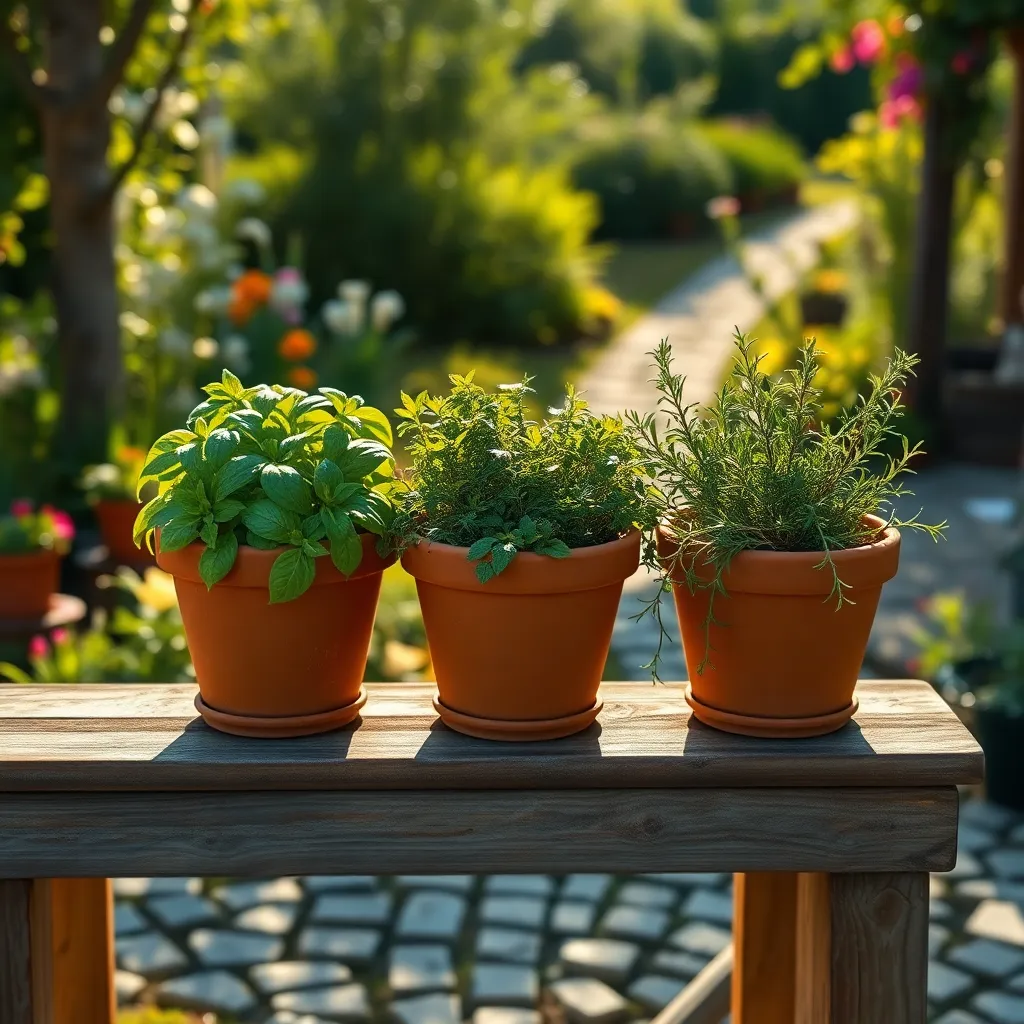
The ‘Herbs Trio’ of basil, thyme, and rosemary is a perfect choice for outdoor containers, offering both beauty and utility. These herbs thrive in pots, allowing easy access for culinary use right outside your kitchen.
Basil loves warmth and sunlight, so place its container in a sunny spot where it receives at least six to eight hours of sunlight daily. Keep the soil consistently moist but not waterlogged, and pinch off the top leaves regularly to encourage bushy growth.
Thyme prefers well-draining soil and less water, making it ideal for gardeners who might forget a watering or two. Plant thyme with a bit of sand mixed into the potting soil to enhance drainage, and trim it often to prevent legginess.
Rosemary is a hardy herb that enjoys similar conditions to thyme, thriving in full sun with well-drained soil. To boost rosemary’s health, allow the soil to dry out slightly between waterings and bring the container indoors during harsh winters if you live in a colder climate.
For those with limited space, consider a single large container to create a mini herb garden combining all three. Ensure each herb has adequate room to grow by spacing them out and providing a nutrient-rich potting mix to support their development.
Succulent Mix: Echeveria and Sedum (Low Maintenance)
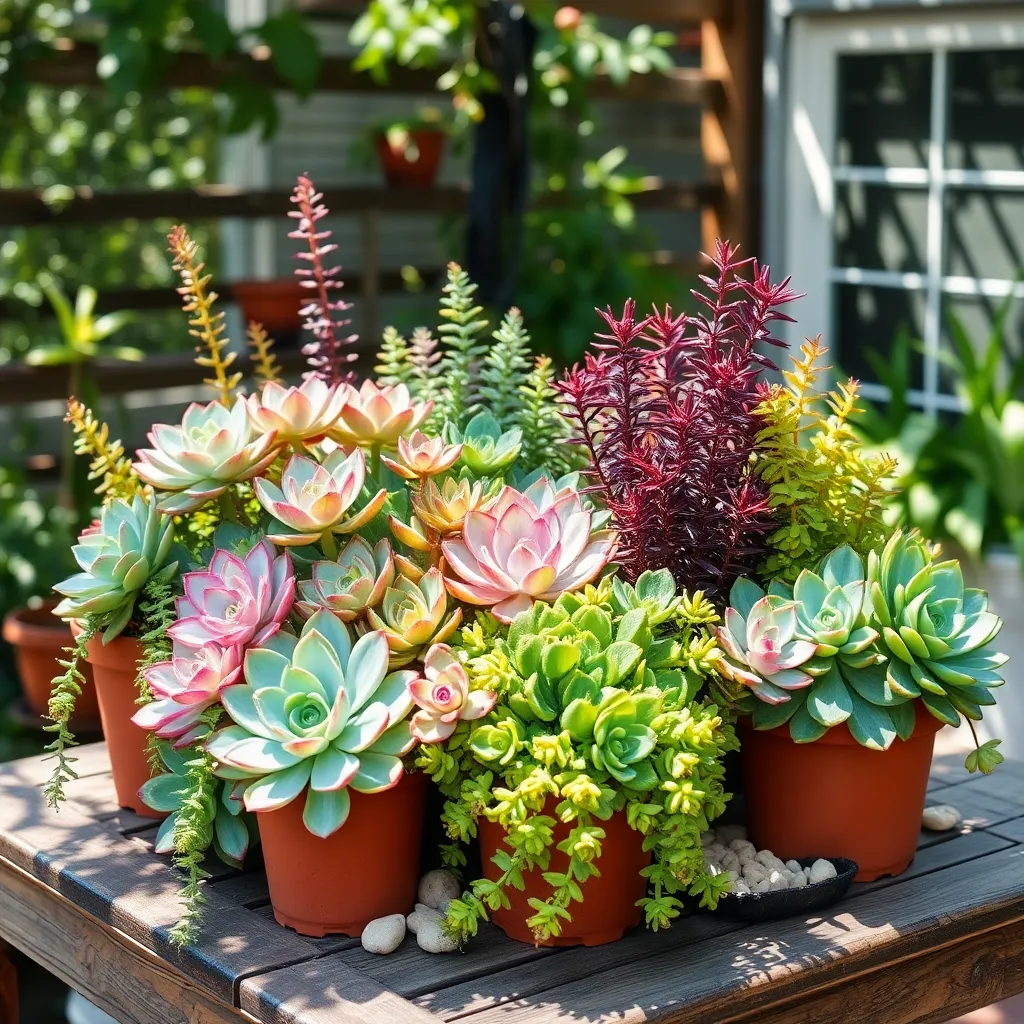
Succulents like Echeveria and Sedum are perfect for gardeners seeking low-maintenance options for outdoor containers. These plants thrive in well-draining soil, so consider using a cactus or succulent mix to keep their roots healthy and rot-free.
To ensure optimal growth, place your succulents in a location where they receive at least six hours of direct sunlight daily. If your climate is particularly hot, providing some shade during the hottest part of the day can prevent leaf scorch.
Water your succulents sparingly, allowing the soil to dry out completely between waterings. This method promotes a strong root system and mimics their natural arid environments, making them more resilient and lush.
For those with more experience, try experimenting with container arrangements, mixing different textures and colors of Echeveria and Sedum for a stunning display. Remember to regularly check for pests like mealybugs and treat them promptly to maintain healthy plants.
Patio Tomato ‘Tiny Tim’ (Bountiful Harvest)
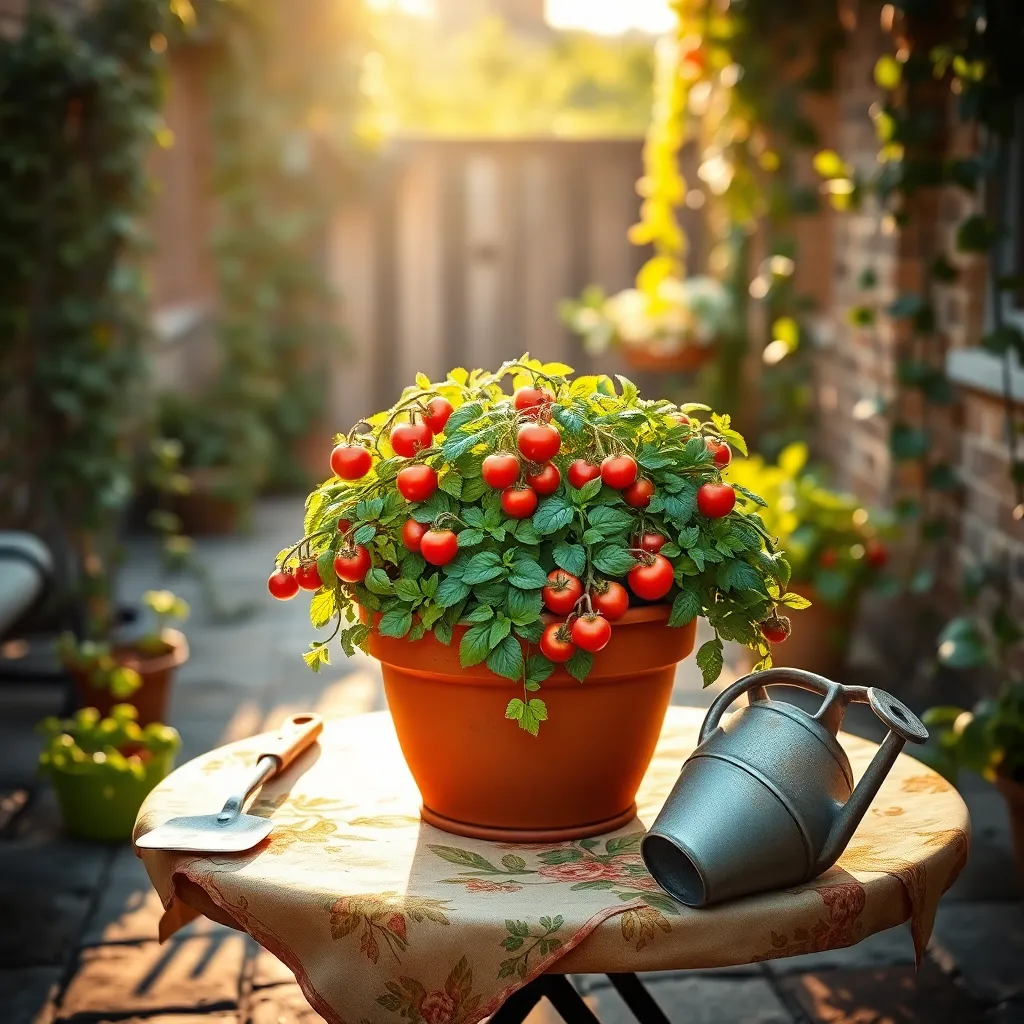
Another fantastic choice for container gardening is the Patio Tomato ‘Tiny Tim’, known for its compact size and bountiful harvests. This dwarf tomato variety is perfect for small spaces, producing juicy, cherry-sized tomatoes that are ideal for salads and snacking.
For optimal growth, position your ‘Tiny Tim’ in a spot that receives at least six hours of sunlight daily. Ensuring the plant is in a well-draining potting mix enriched with organic matter will help it thrive and produce a generous crop.
Watering is crucial; aim to keep the soil consistently moist but not waterlogged, watering when the top inch of soil feels dry. To encourage fruiting, consider feeding your plants with a balanced liquid fertilizer every two weeks once flowers appear.
Advanced gardeners can try pinching off the suckers, the small shoots that appear in the leaf axils, to direct more energy to fruit production. To prevent diseases like blight, ensure good air circulation around the plant and avoid overhead watering to keep the foliage dry.
Fuchsia ‘Shadow Dancer’ Series (Stunning Hanging Display)
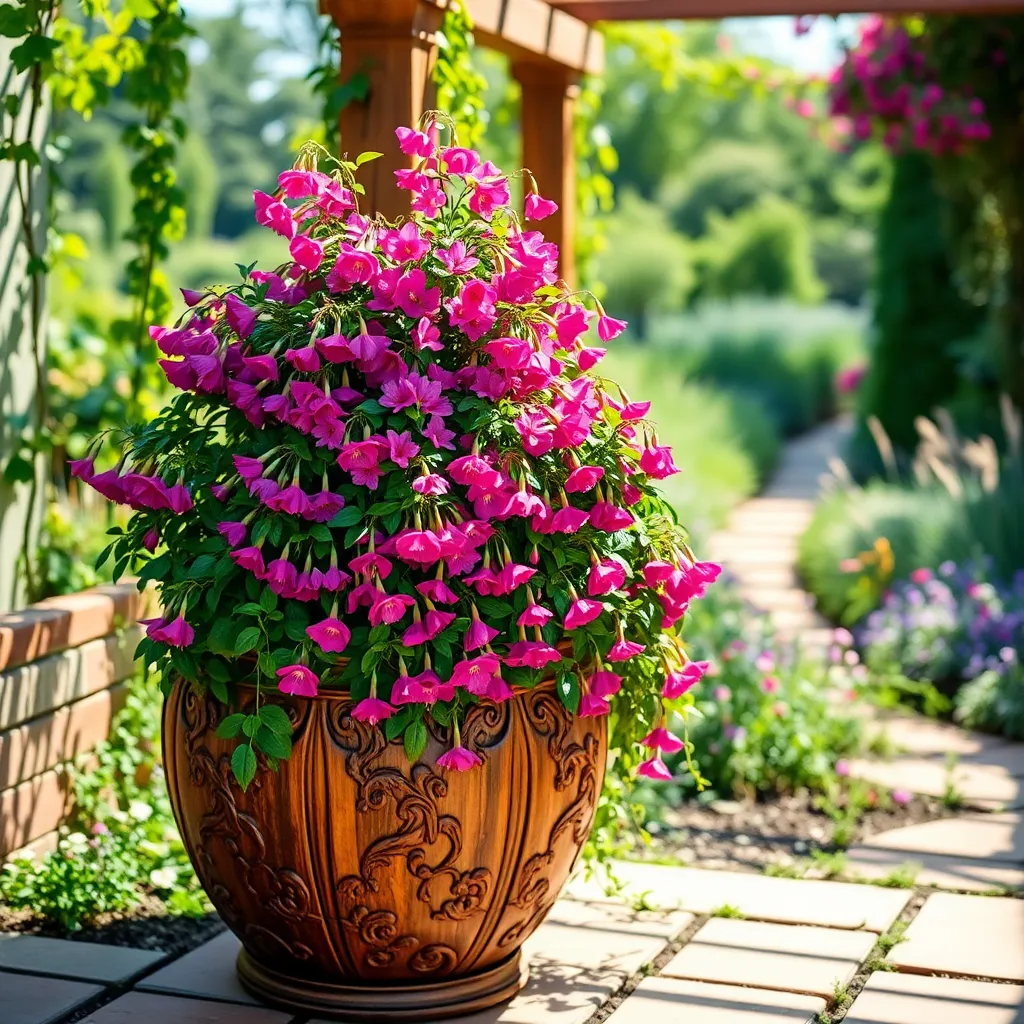
The Fuchsia ‘Shadow Dancer’ series is an excellent choice for creating a stunning hanging display in your outdoor garden. These plants are known for their vibrant, pendulous blooms that can transform any space into a colorful paradise.
When planting Fuchsia ‘Shadow Dancer’, choose a container with good drainage to prevent root rot. Fill it with a high-quality potting mix that retains moisture but drains well, such as a blend containing peat moss and perlite.
Position your fuchsia containers in a spot with partial shade, as too much direct sunlight can scorch their delicate flowers. Water consistently, ensuring the soil remains moist but not soggy; this is crucial for maintaining their lush blooms.
To encourage continuous flowering, regularly deadhead spent flowers and feed the plants every two weeks with a balanced, water-soluble fertilizer. Advanced gardeners might consider pinching back new growth to encourage bushier plants and more abundant blooms.
Ornamental Grasses (Textural Contrast)
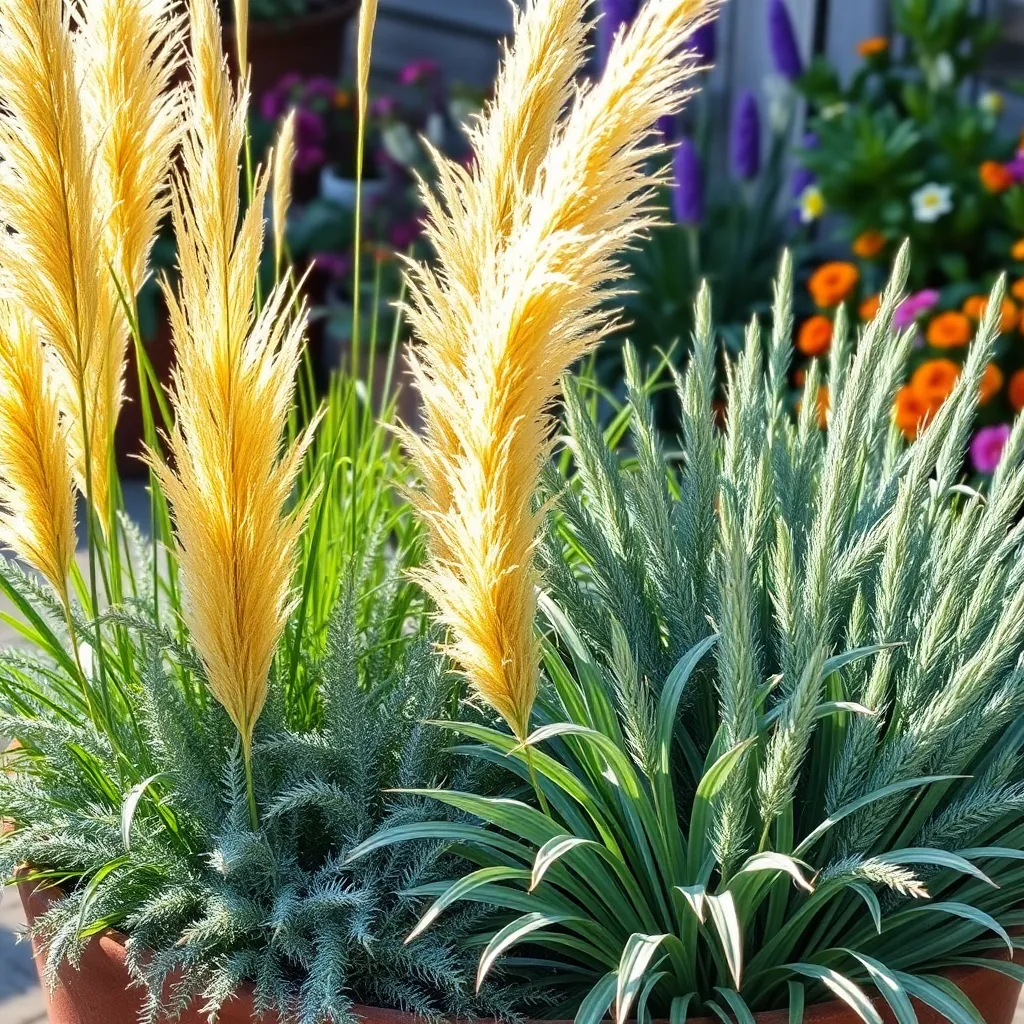
Ornamental grasses are a fantastic choice for outdoor containers, providing textural contrast that enhances any garden display. Their swaying plumes and diverse foliage colors can transform a simple container into a stunning focal point.
When planting ornamental grasses in containers, it’s essential to choose a pot with good drainage. Most grasses prefer well-draining soil, so consider a mix of potting soil with added perlite or sand to ensure adequate drainage.
Watering needs for ornamental grasses can vary, but generally, they prefer to dry out slightly between waterings. Monitor the soil moisture by sticking your finger into the soil; if the top inch feels dry, it’s time to water.
For those looking to add a touch of sophistication, consider using grasses such as Pennisetum ‘Fireworks’ or Carex ‘Evergold’. These varieties not only provide interesting foliage but also require minimal maintenance, making them ideal for both novice and experienced gardeners.
Begonia ‘Dragon Wing’ (Heat Tolerant Beauty)

The Begonia ‘Dragon Wing’ is a top choice for outdoor containers due to its unique blend of beauty and resilience. With its heat tolerance and vibrant blooms, it thrives when temperatures rise, making it perfect for summer displays.
To ensure your Begonia ‘Dragon Wing’ thrives, plant it in a container filled with a well-draining soil mix, such as a blend of potting soil and perlite. Position the container in a spot with partial to full shade to protect the leaves from scorching while still allowing sufficient light for blooming.
Regular watering is crucial for this begonia, but be cautious not to overwater. Allow the top inch of soil to dry out between waterings to prevent root rot, and ensure drainage holes are unobstructed.
For continuous blooms, feed your Begonia ‘Dragon Wing’ with a balanced, water-soluble fertilizer every two to four weeks during the growing season. Pinching back the tips can encourage bushier growth and more flowers, enhancing its lush appearance.
Dwarf Conifers (Year-Round Structure)
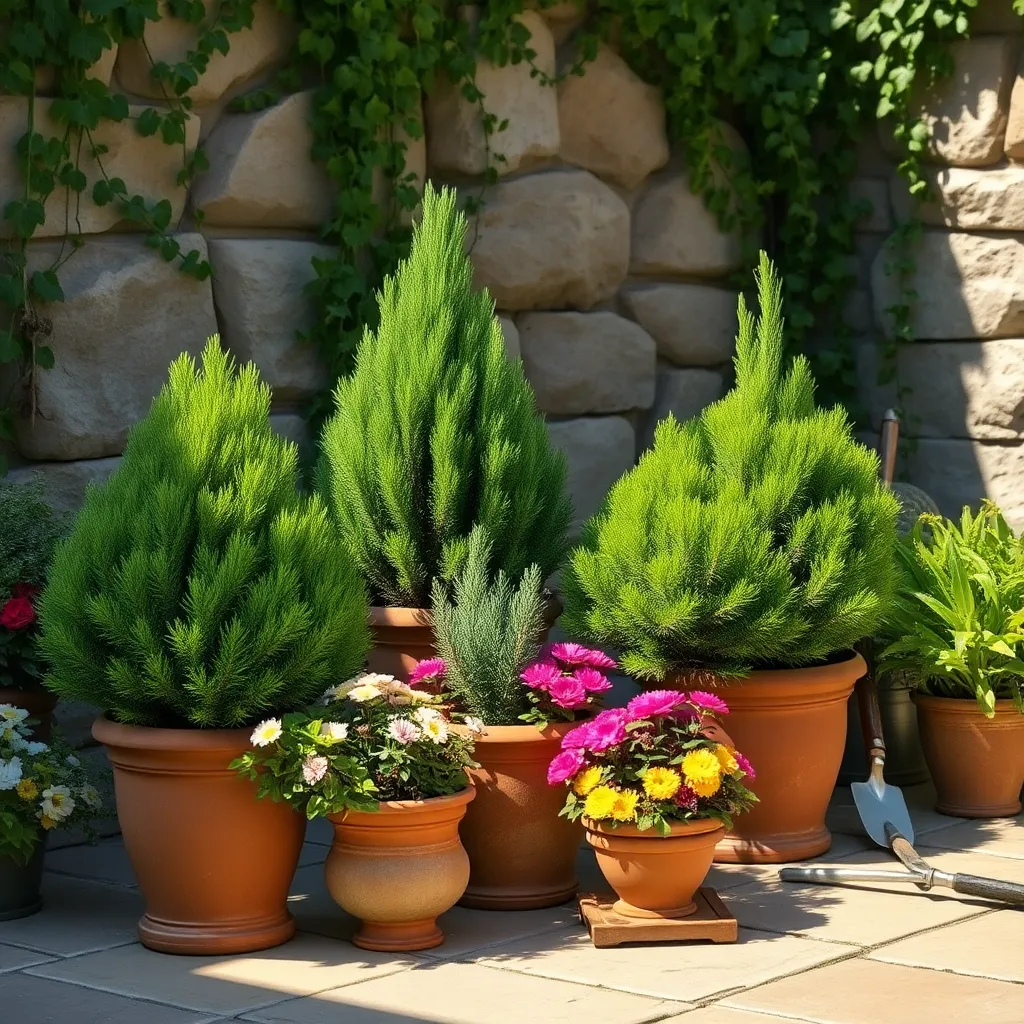
Dwarf conifers are an excellent choice for adding year-round structure to your outdoor containers. Their compact size makes them perfect for patios and balconies, providing a lush, evergreen presence even in the dreariest months.
To ensure success, select a well-draining potting mix that retains some moisture without becoming waterlogged. These hardy plants thrive in full sun to partial shade, so place your containers where they can soak up plenty of sunlight.
Regular watering is crucial, especially during the warmer months, but be mindful not to overwater as conifers dislike soggy roots. A once-a-year application of a balanced, slow-release fertilizer can support steady growth and vibrant foliage.
For those looking to refine their gardening skills, consider experimenting with pruning techniques to maintain the desired shape and size of your dwarf conifers. This not only keeps them looking tidy but can also promote healthier growth over time.
Petunia ‘Wave’ Series (Spreading Color)
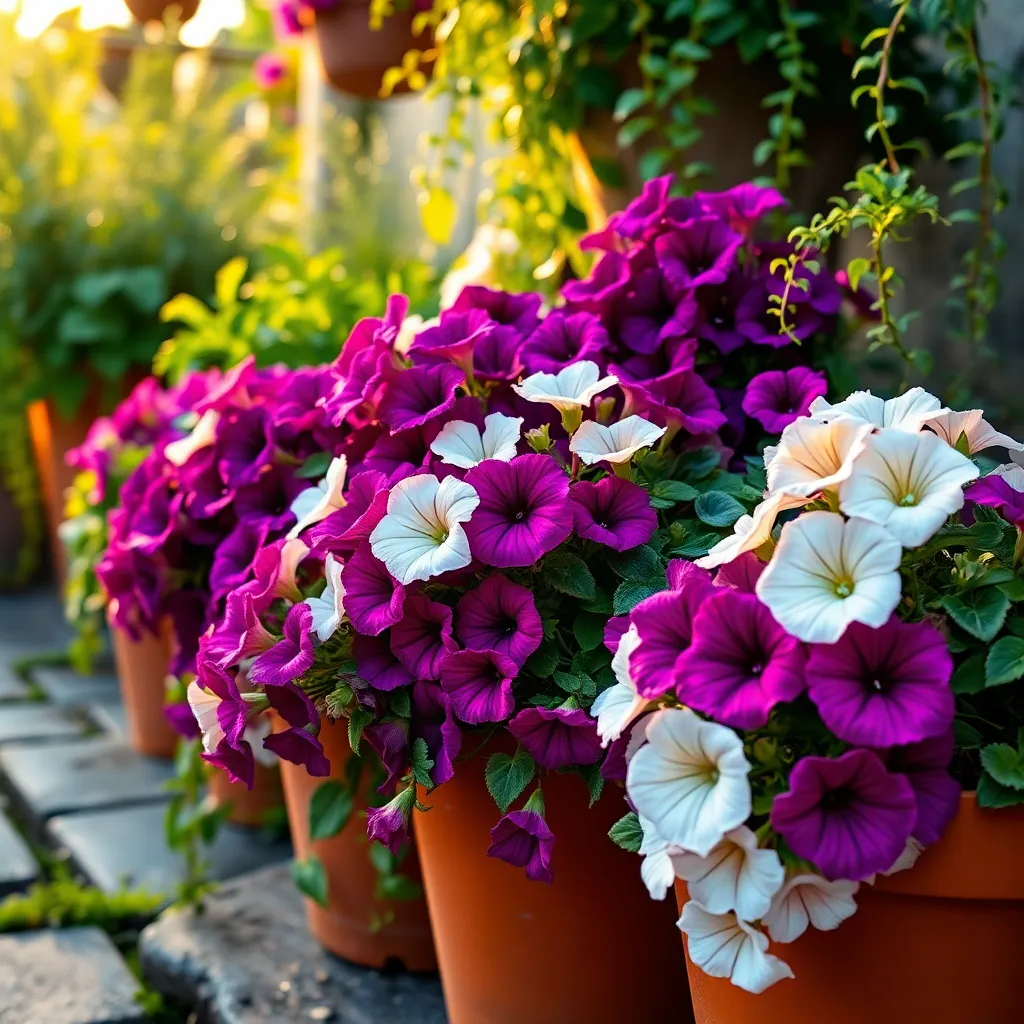
The Petunia ‘Wave’ Series is a fantastic choice for gardeners seeking vibrant, cascading color in their outdoor containers. Known for their vigorous growth and wide-spreading habit, these petunias can quickly transform any container into a floral masterpiece.
To achieve the best results, plant your ‘Wave’ petunias in a well-draining potting mix rich in organic matter. Ensure your containers have drainage holes to prevent waterlogging, which these plants do not tolerate well.
These petunias thrive in full sunlight, so place your containers in a spot where they receive at least 6 hours of sun daily. During particularly hot spells, you may need to water them more frequently, but always check the soil moisture first to avoid overwatering.
For continuous blooms throughout the season, consider using a balanced, water-soluble fertilizer every two weeks. Prune back any leggy stems to encourage bushier growth and more abundant flowering, keeping your containers looking lush and vibrant.
Conclusion: Growing Success with These Plants
In exploring the “10 Best Plants for Outdoor Containers,” we’ve uncovered key relationship concepts that can nurture your green space and personal connections. First, choosing adaptable plants mirrors the importance of flexibility in relationships. Understanding the needs of each plant parallels recognizing individual needs in partnerships. Incorporating evergreens for stability emphasizes the value of consistency. The vibrant blooms of flowering plants remind us of the joy that spontaneity and celebration bring. Drought-tolerant plants teach resilience, while pairing herbs with flowers illustrate harmony through diversity. Low-maintenance options highlight the importance of balance, and seasonal plants bring awareness to the natural ebb and flow of relationships. Lastly, incorporating native species supports mutual growth and sustainability.
To put these concepts into action, choose one plant from the list and consider how its traits can inspire positive changes in your relationship dynamics. As you embark on this journey, save this article for future reference—it’s a valuable guide to cultivating both your garden and your personal connections.
Remember, nurturing relationships is an ongoing process that can lead to flourishing success. By integrating these insights, you’re planting seeds for a thriving future. Bookmark this article to revisit these evergreen strategies whenever you need a boost in your relationship journey.

